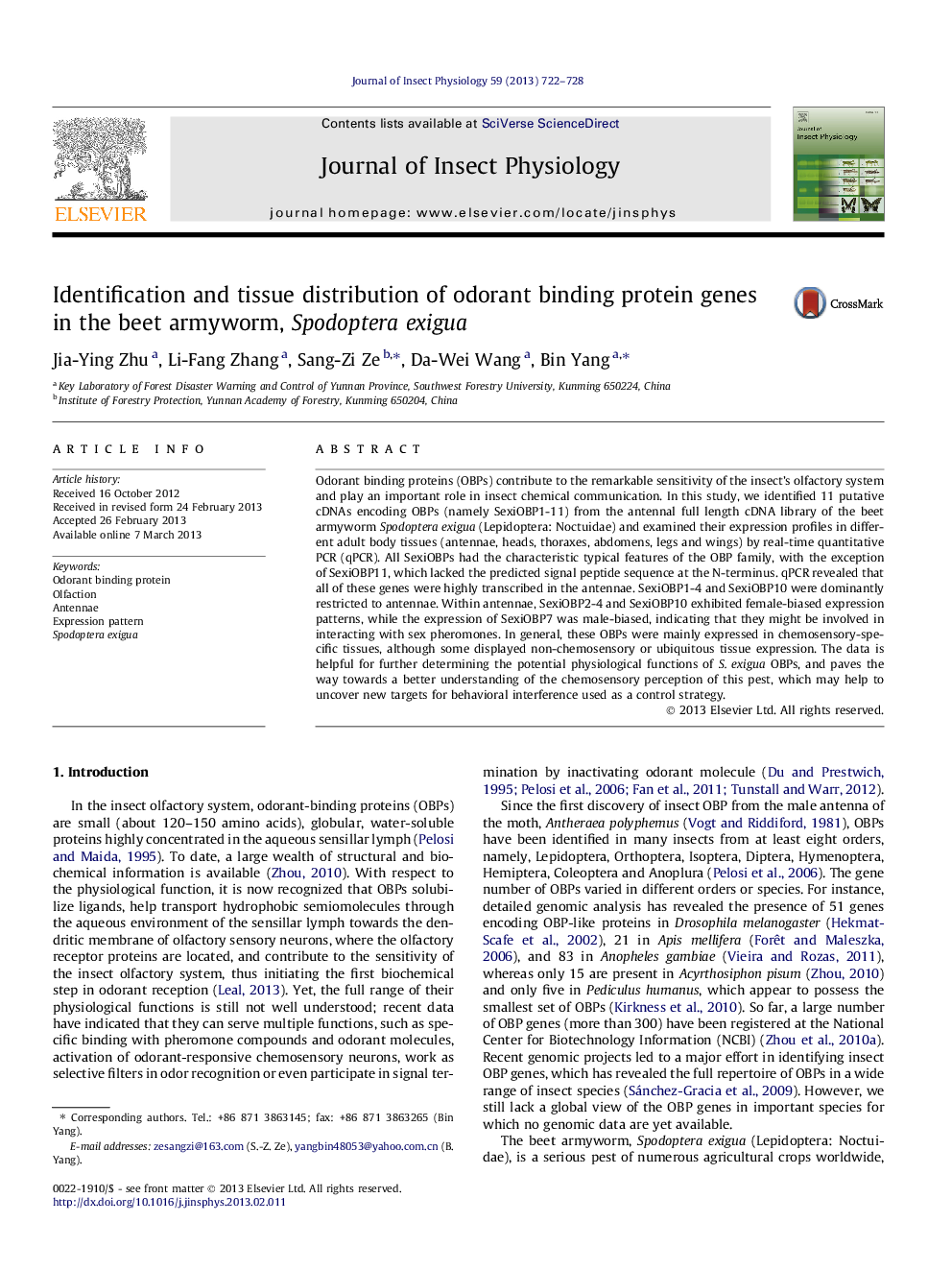| کد مقاله | کد نشریه | سال انتشار | مقاله انگلیسی | نسخه تمام متن |
|---|---|---|---|---|
| 2840591 | 1165339 | 2013 | 7 صفحه PDF | دانلود رایگان |

• Eleven Spodoptera exigua OBP genes (SexiOBP1-11) identified and tissue expression investigated.
• All SexiOBPs exhibited the typical structures of OBP gene family except for SexiOBP11, which lacked the predicted signal peptide.
• All highly expressed in the antennae of both sexes.
• SexiOBP1-4 and SexiOBP10 expressed only in antennae.
• SexiOBP2-4, SexiOBP7 and SexiOBP10 was sex-biased.
Odorant binding proteins (OBPs) contribute to the remarkable sensitivity of the insect’s olfactory system and play an important role in insect chemical communication. In this study, we identified 11 putative cDNAs encoding OBPs (namely SexiOBP1-11) from the antennal full length cDNA library of the beet armyworm Spodoptera exigua (Lepidoptera: Noctuidae) and examined their expression profiles in different adult body tissues (antennae, heads, thoraxes, abdomens, legs and wings) by real-time quantitative PCR (qPCR). All SexiOBPs had the characteristic typical features of the OBP family, with the exception of SexiOBP11, which lacked the predicted signal peptide sequence at the N-terminus. qPCR revealed that all of these genes were highly transcribed in the antennae. SexiOBP1-4 and SexiOBP10 were dominantly restricted to antennae. Within antennae, SexiOBP2-4 and SexiOBP10 exhibited female-biased expression patterns, while the expression of SexiOBP7 was male-biased, indicating that they might be involved in interacting with sex pheromones. In general, these OBPs were mainly expressed in chemosensory-specific tissues, although some displayed non-chemosensory or ubiquitous tissue expression. The data is helpful for further determining the potential physiological functions of S. exigua OBPs, and paves the way towards a better understanding of the chemosensory perception of this pest, which may help to uncover new targets for behavioral interference used as a control strategy.
Figure optionsDownload as PowerPoint slide
Journal: Journal of Insect Physiology - Volume 59, Issue 7, July 2013, Pages 722–728